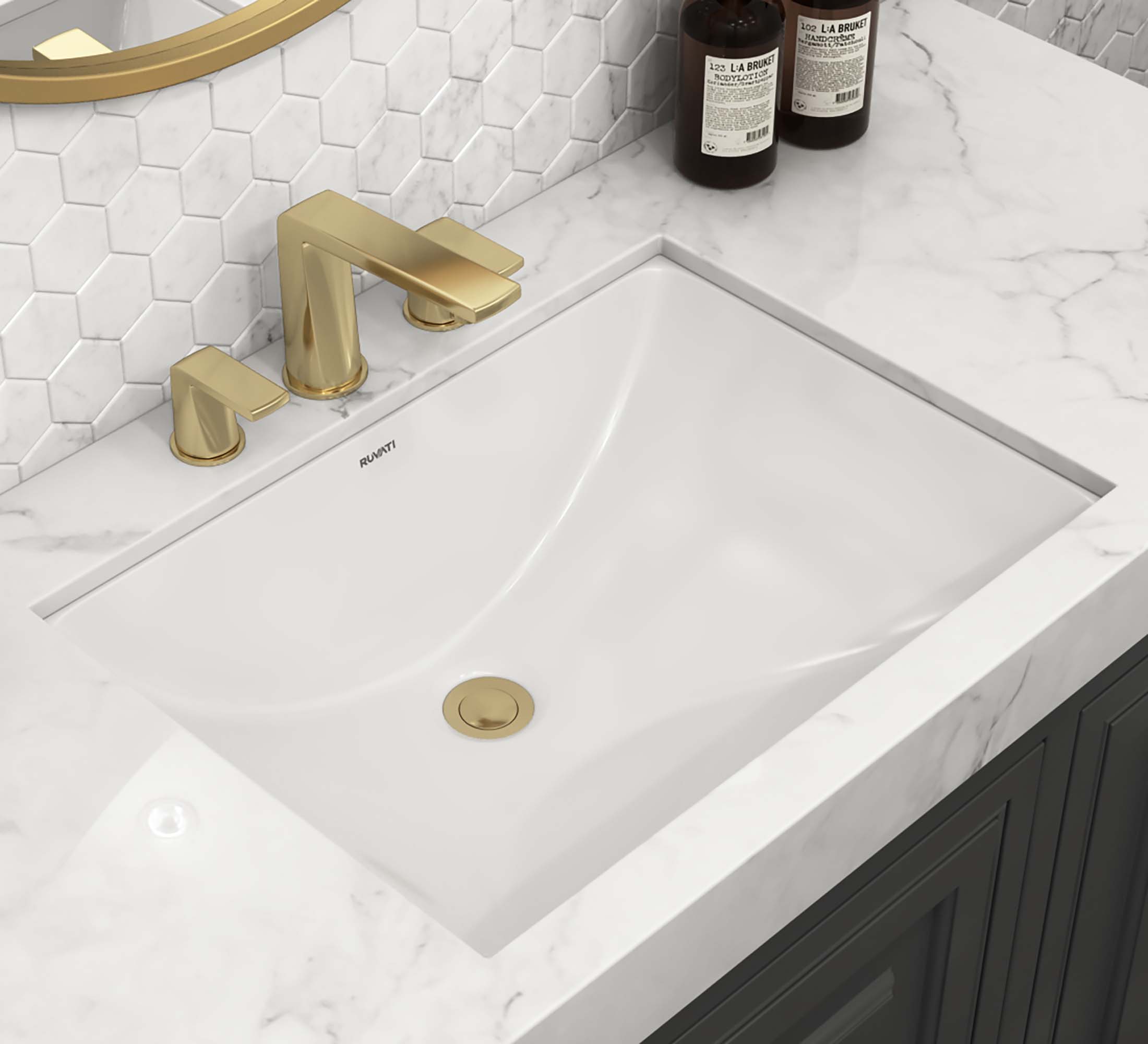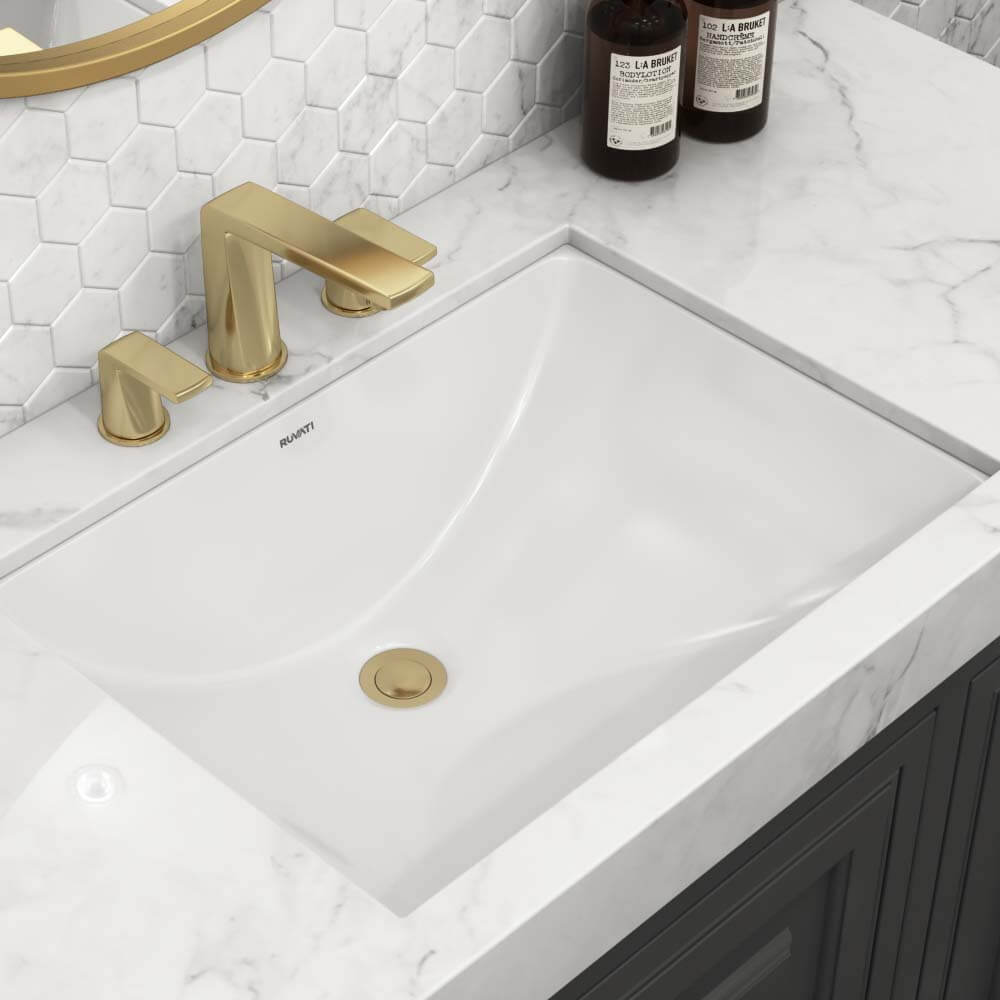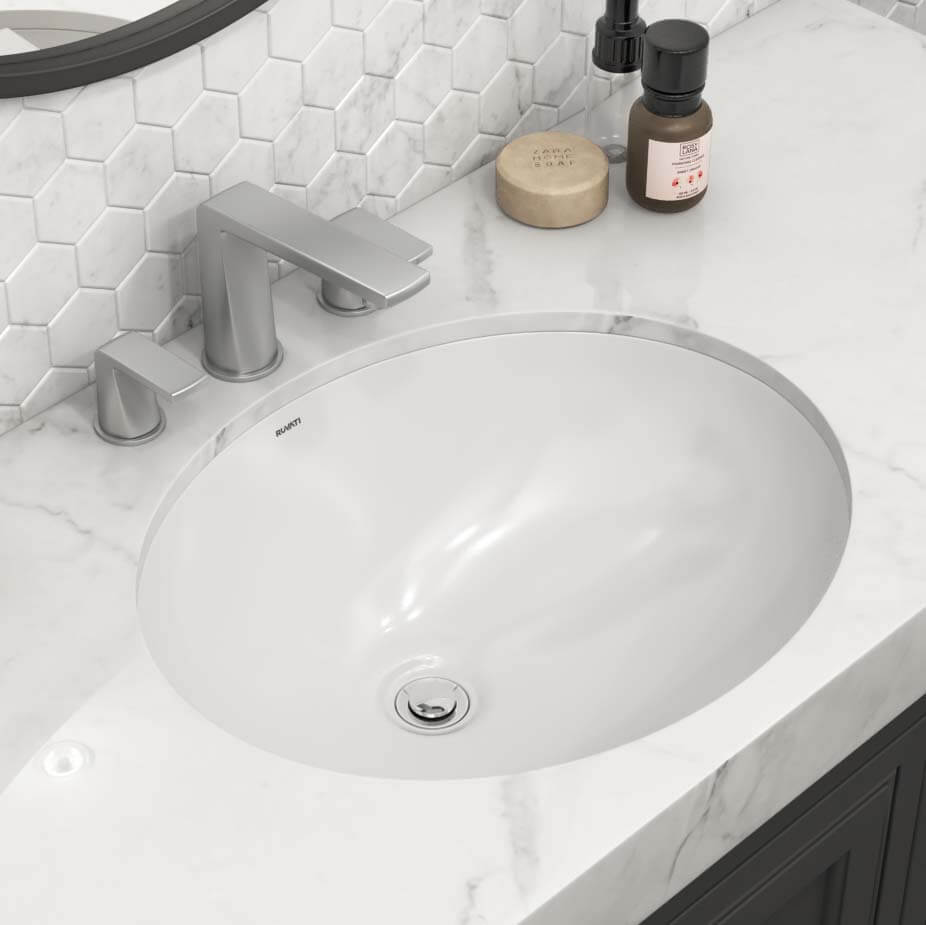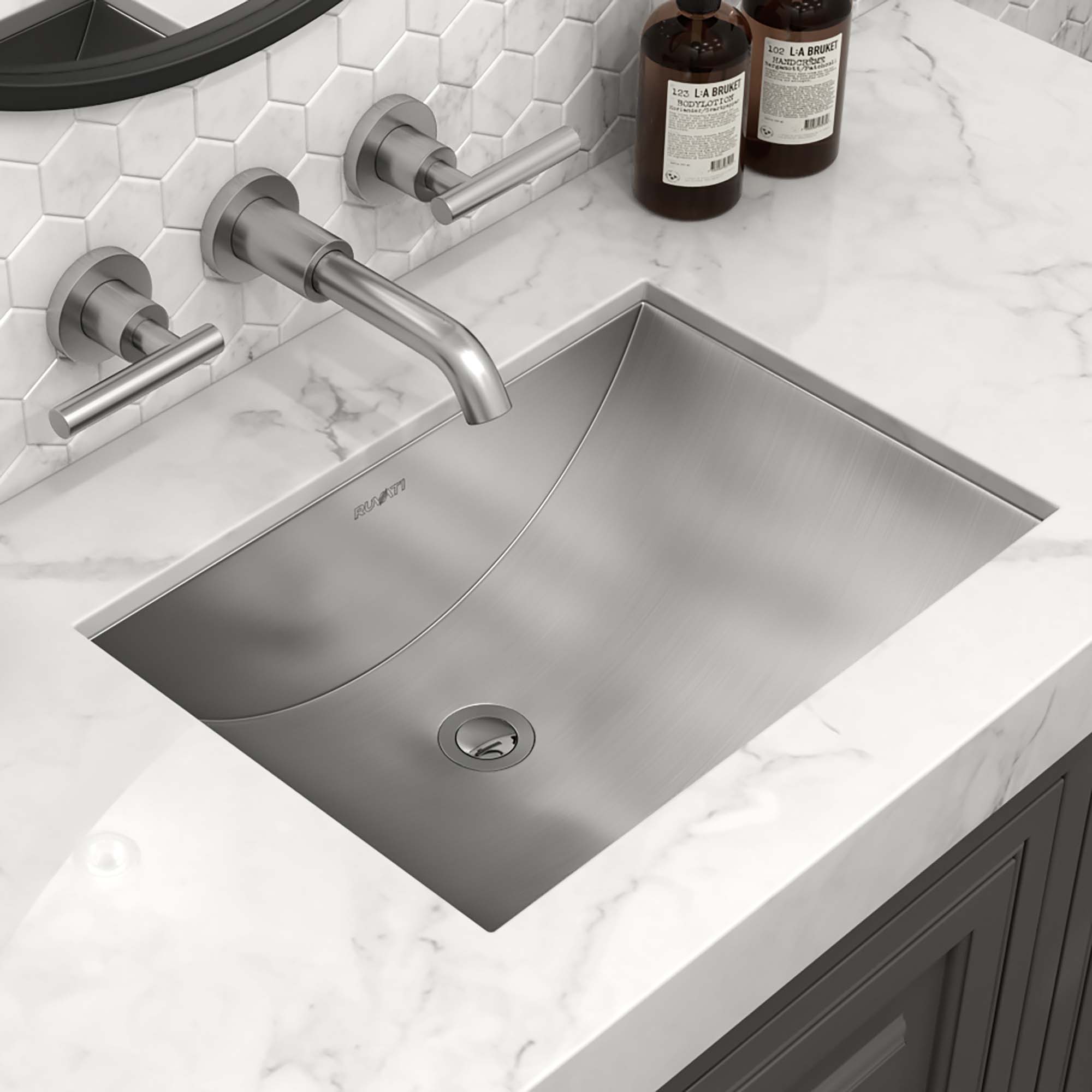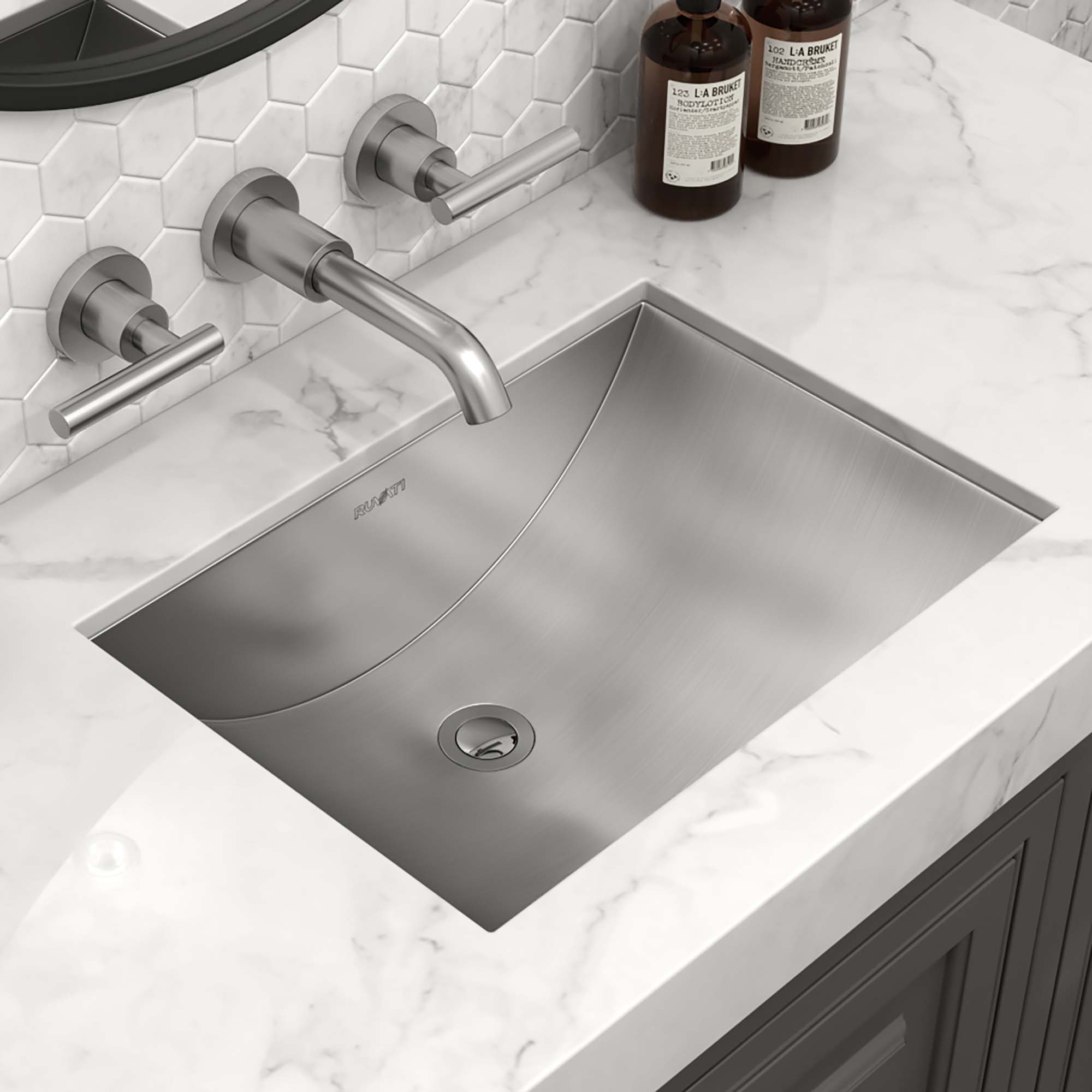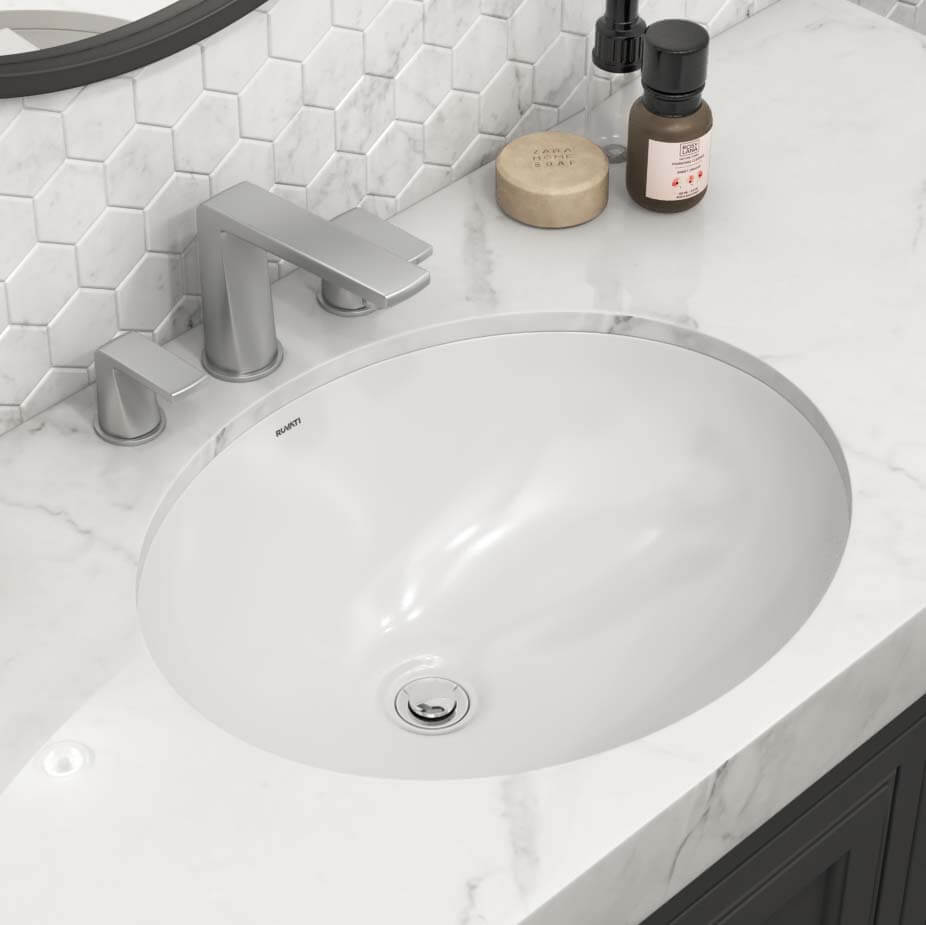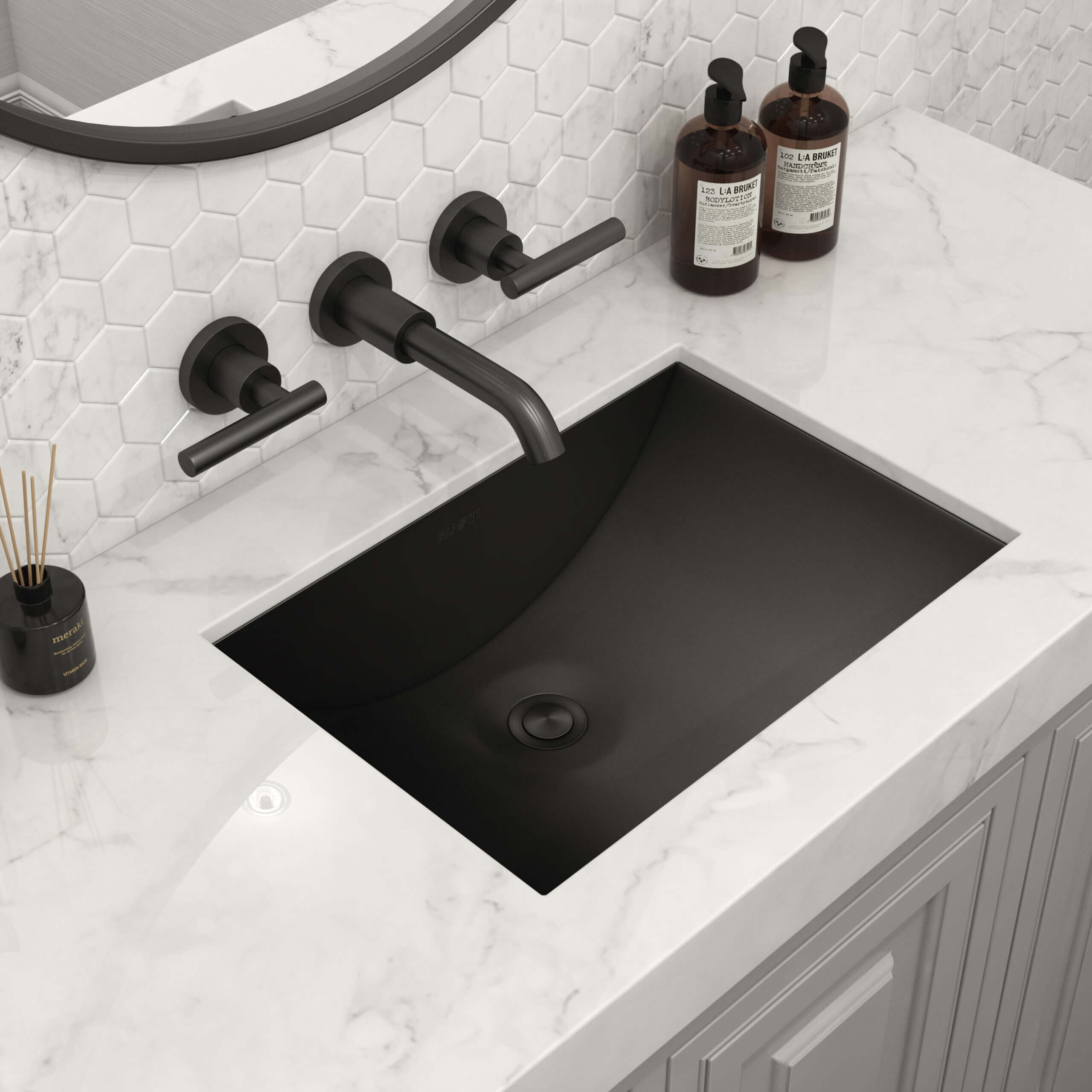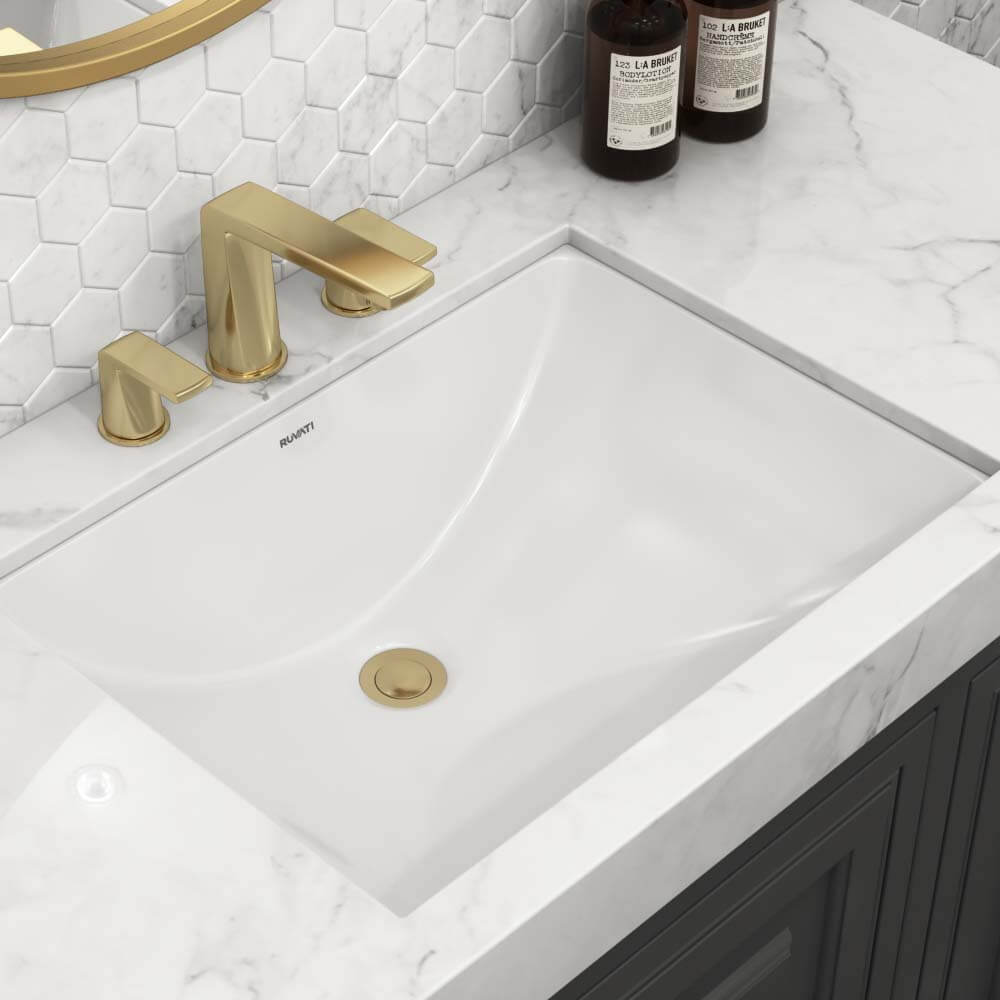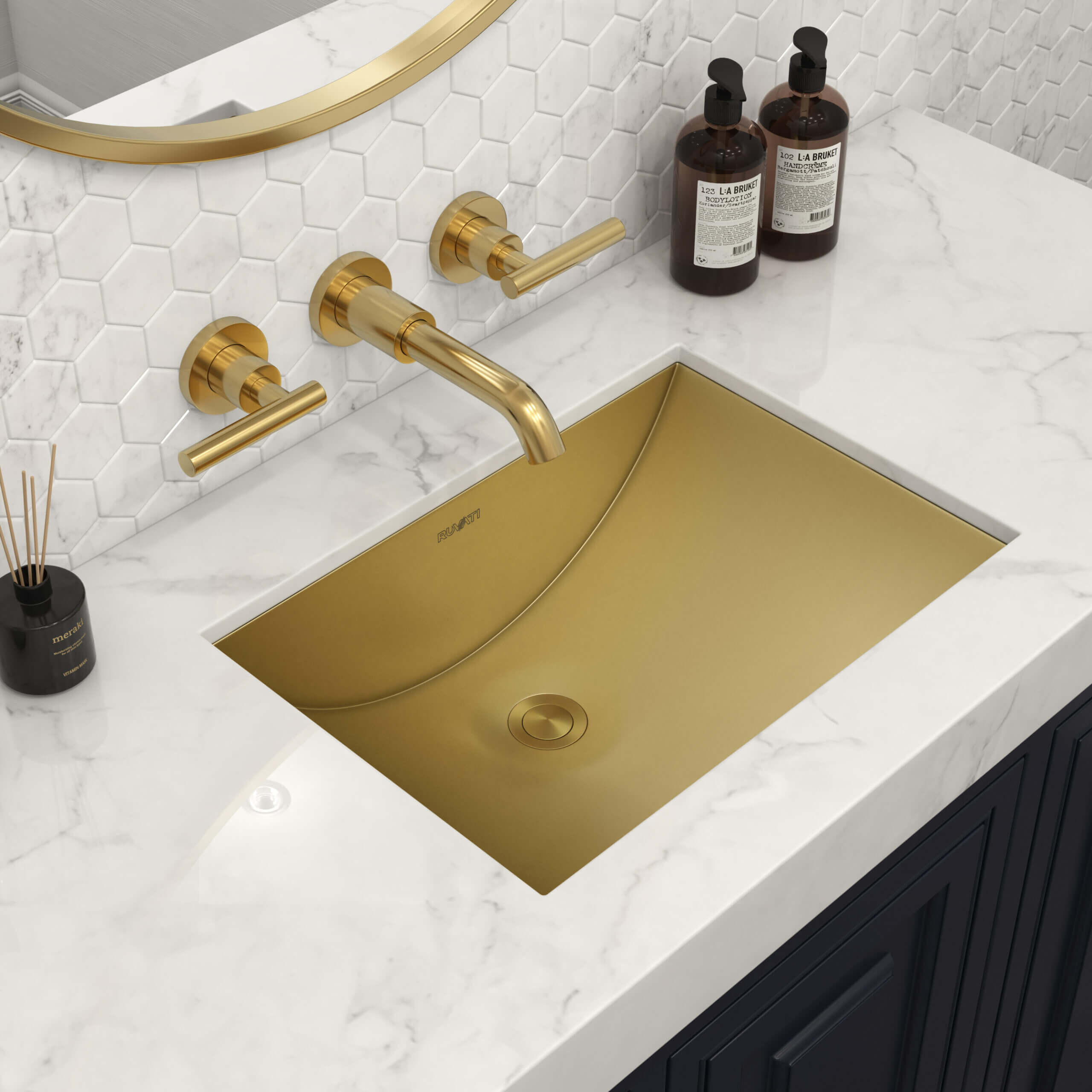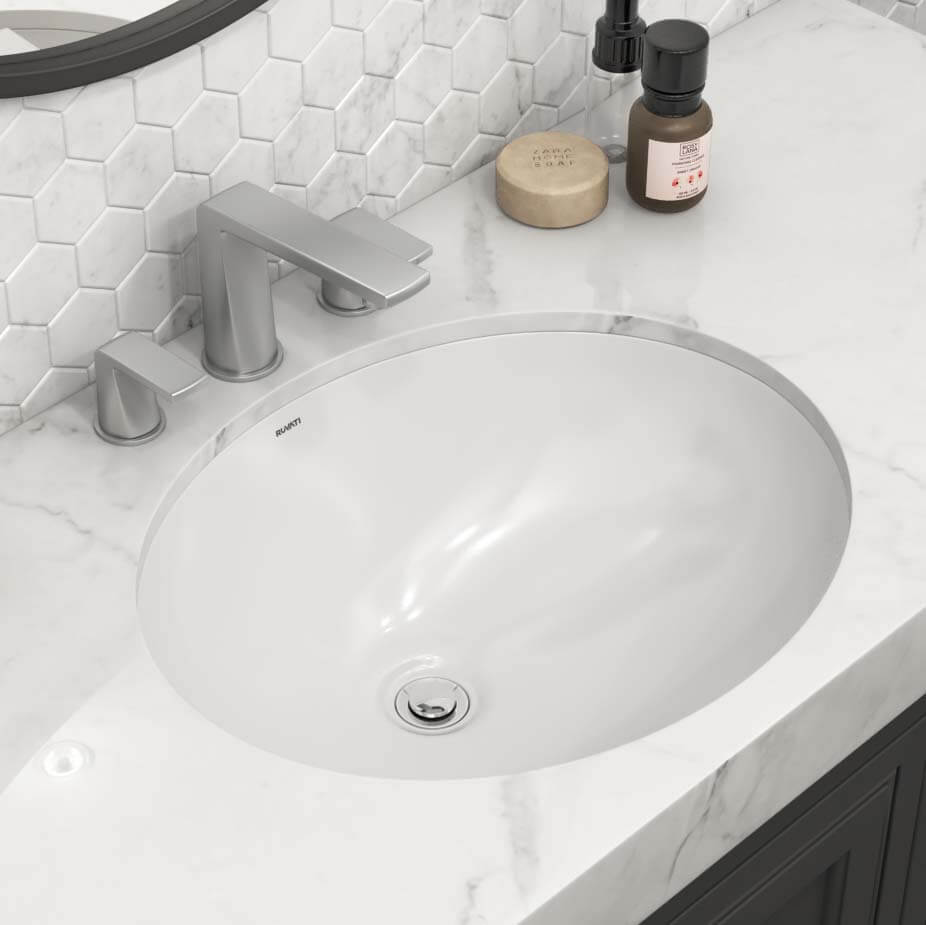Undermount Sinks
In a range of shapes and shades, undermount bathroom sinks from Ruvati are designed to revolutionize your space.
12 of 78 results
-

Krona
Ruvati 17 x 12 inch Undermount Bathroom Vanity Sink White Rectangular Porcelain Ceramic with Overflow – RVB0718
Model: RVB0718View DetailsCompare -

Krona
Ruvati 18 x 13 inch Undermount Bathroom Sink White Rectangular Porcelain Ceramic with Overflow – RVB0720
Model: RVB0720View DetailsCompare -

Ariaso
Ruvati 16 x 11 inch Gunmetal Black Undermount Bathroom Sink Stainless Steel – RVH6107BL
Model: RVH6107BLView DetailsCompare -

Krona
Ruvati 16 x 13 inch Undermount Bathroom Sink White Oval Porcelain Ceramic with Overflow – RVB0618
Model: RVB0618View DetailsCompare -

Ariaso
Ruvati 18 x 12 inch Brushed Stainless Steel Rectangular Bathroom Sink Undermount – RVH6110
Model: RVH6110View DetailsCompare -

Ariaso
Ruvati 16 x 11 inch Brushed Stainless Steel Rectangular Bathroom Sink Undermount – RVH6107
Model: RVH6107View DetailsCompare -

Krona
Ruvati 15 x 12 inch Undermount Bathroom Vanity Sink White Oval Porcelain Ceramic with Overflow – RVB0616
Model: RVB0616View DetailsCompare -

Ariaso
Ruvati 18 x 12 inch Gunmetal Black Stainless Steel Rectangular Bathroom Sink Undermount – RVH6110BL
Model: RVH6110BLView DetailsCompare -

Krona
Ruvati 18 x 12 inch Undermount Bathroom Vanity Sink White Rectangular Porcelain Ceramic with Overflow – RVB0721
Model: RVB0721View DetailsCompare -

Ariaso
Ruvati 18 x 12 inch Brushed Gold Polished Brass Rectangular Bathroom Sink Undermount – RVH6110GG
Model: RVH6110GGView DetailsCompare -

Ariaso
Ruvati 16 x 11 inch Brushed Gold Polished Brass Rectangular Bathroom Sink Undermount – RVH6107GG
Model: RVH6107GGView DetailsCompare -

Krona
Ruvati 17 x 14 inch Undermount Bathroom Vanity Sink White Oval Porcelain Ceramic with Overflow – RVB0619
Model: RVB0619View DetailsCompare
Additional Description:
Undermount Sinks: Enhancing Aesthetics and Functionality
Undermount sinks have gained significant popularity in modern kitchen and bathroom designs due to their sleek appearance, functionality, and ease of maintenance. Unlike traditional top-mounted sinks that rest on the countertop, undermount sinks are installed below the countertop surface. This installation method offers a seamless and clean look to the overall design, making them a preferred choice for many homeowners and designers. In this article, we will delve into the advantages, installation process, materials, and maintenance of undermount sinks.
Also don't forget to checkout, Ruvati's Krona & Ariaso Collections
Advantages of Undermount Sinks
1. Aesthetics: Undermount sinks provide a streamlined and elegant appearance to any kitchen or bathroom. They offer a seamless integration with the countertop, enhancing the overall aesthetic appeal of the space. The absence of a visible rim or edge creates a clean, modern look.
2. Easy to Clean: The absence of a rim makes cleaning a breeze. You can simply wipe down the countertop and push crumbs or spills directly into the sink without any obstructions. This also prevents the accumulation of grime and dirt that can gather around the rim of top-mounted sinks.
3. Maximized Counter Space: Undermount sinks do not have a rim that juts up above the counter, providing more usable counter space. This is particularly beneficial for smaller kitchens or bathrooms where every inch of space matters.
4. Flexibility in Countertop Materials: Undermount sinks can be installed with various countertop materials such as granite, marble, quartz, or solid surface. This versatility allows homeowners to choose a sink that complements their preferred countertop material and design.
5. Durability and Resilience: Undermount sinks are typically made of durable materials like stainless steel, porcelain, cast iron, or composite materials. These materials are resistant to stains, scratches, and chipping, ensuring a long-lasting sink that withstands daily use.
Installation Process
Installing an undermount sink requires precision and expertise to ensure a secure and watertight fit. Here's a step-by-step guide to the installation process:
1. Measure and Cut the Countertop: Measure the dimensions of the sink and mark the cutout on the countertop. Using appropriate tools, carefully cut the countertop to accommodate the sink.
2. Prepare the Sink: Apply a sealant or adhesive to the rim of the sink. This will create a watertight bond between the sink and the countertop.
3. Position the Sink: Carefully place the sink into the cutout, ensuring it is centered and level. Press the sink firmly to secure the adhesive bond.
4. Attach Brackets and Supports: Depending on the sink design, you may need to attach support brackets underneath the sink to provide additional stability and support.
5. Connect Plumbing: Once the sink is securely in place, connect the plumbing and seal the connections to prevent leaks.
6. Seal the Edges: Apply a waterproof sealant around the edges of the sink where it meets the countertop. This will further ensure a watertight seal and prevent water from seeping into the cabinet below.
Materials for Undermount Sinks
1. Stainless Steel: Stainless steel undermount sinks are a popular choice due to their durability, resistance to corrosion, and easy maintenance. They complement various kitchen styles and are available in a range of finishes.
2. Porcelain: Porcelain undermount sinks offer a classic, elegant look and are available in a variety of shapes, sizes, and colors. They are resistant to stains and easy to clean.
3. Composite Materials: Composite undermount sinks are made from a blend of materials such as quartz, granite, acrylic, or resins. They combine the durability of natural stone with the design flexibility of composite materials.
Maintenance of Undermount Sinks
1. Regular Cleaning: Clean the sink regularly using mild soap and water to maintain its appearance. Avoid abrasive cleaners that could scratch the surface.
2. Prevent Scratches: To prevent scratches, use a sink grid or a protective mat at the bottom of the sink, especially if it's made of stainless steel.
3. Avoid Harsh Chemicals: Avoid using harsh chemicals or bleach, as they can damage the sink's surface and finish.
4. Address Stains Promptly: Address any stains promptly to prevent them from becoming permanent. For tougher stains, a mixture of baking soda and water can be used.
In conclusion, undermount sinks offer a stylish and functional solution for modern kitchens and bathrooms. Their seamless design, ease of maintenance, and variety of materials make them a popular choice among homeowners and designers seeking a contemporary and aesthetically pleasing look for their living spaces. With proper installation and regular maintenance, an undermount sink can provide years of beauty and utility in any home.

